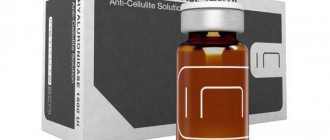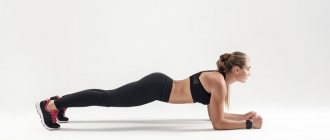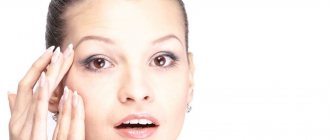- 04 May 2022 03:59
- Author: Super User
- Category: Info
Ear correctors are small devices to hide protruding ears in adults and children. Correctors appeared not so long ago, and the idea of creating them belonged to one woman who wanted to hide the protruding ears of her little daughter.
Correctors are practically invisible behind the ear and can hide defects of absolutely any complexity. They also differ in size and method of fastening. Depending on the brand you choose, you can qualitatively correct the ears of a child and an adult.
What it is?
There are two popular brands: Otostik and Arilis . You can choose Otistick or Arilis , given the significant differences between their products. Each company has ear correctors for both children and adults. Children's ones are distinguished by their size and hypoallergenicity. Despite this, when choosing between Otistick or Arilis, the second company has problems with the adhesive base.
Ear correctors consist of two silicone plates with membranes. It is made of plates and is attached directly to the head, and the other to the ear. The plates are treated with a special glue, which ensures complete adherence of the ear to the head.
Mode of application
- Wipe the ear and scalp behind the ear with Arilis Spray Lotion cleanser (for skin care in the ear area). Wait for the skin to dry.
- Remove hair from the attachment area and secure it if possible. Without removing the protective layer from the adhesive surface of the corrector, determine the place to which you will attach it.
- Remove the protective film from one half of the corrector lens and attach the lens to the back of your ear at the top.
- Remove the protective film from the second half of the corrector and attach the lens parallel to the first half to the scalp behind the ear.
- The duration of wearing the corrector is up to 10 days. After this time, replace the corrector with a new one.
Watch the video on how to properly attach the corrector.
Differences between Otistick and Arilis
The differences between Otistick and Arilis are:
- — package size;
- - composition of the glue used;
- - the shape of the plates themselves;
- — certifications and the ability to buy;
Each of the products undergoes certification, which determines the safety of use and allergenicity of the ear corrector. Some adhesive compositions are simply not suitable for sensitive skin of the ear and head. Especially if these are correctors for children, which should not create discomfort when worn.
Peculiarities
- Absolutely invisible - ear correctors are made of transparent silicone, which allows them to always remain invisible.
- Hypoallergenic - your child will not have irritation or discomfort from correctors.
- Resistant to water - thanks to a special adhesive composition, the correctors will not come off when visiting the shower, pool or bath.
- They retain their shape for a long time - even with the most active lifestyle, Arilis guarantees that the desired shape of the ears will be maintained for at least 7 days.
Otostik VS Arilis
Arilis was released in Russia and can be purchased at any pharmacy, Otostik is a Spanish technology, it can be ordered on specialized websites and in the online store earstick.ru. Despite this, when choosing between Otostik or Arilis, many people prefer Otostik. First of all, it is easier to peel off and does not cause irritation on the surface of the ear. If you install the corrector incorrectly, it will not stay on for the required time and will immediately come off. In rare cases, correctors cause itching and sores after removing the device. Each company, when providing its products, also provides special instructions. Using it, you can correctly install the ear corrector without damaging its adhesive base.
The corrector is attached to previously prepared skin - it should be cleaned using disinfectants. This is required for any corrector, regardless of Otostik or Arilis . There are 10 pieces in the Arilis package, that is, 5 pairs of ear correctors. Their shelf life is up to ten days, after which the glue is not so strong. The otostik has only 8 pieces, that is, 4 pairs, but it can last more than two weeks. It is recommended to wear ear correctors for more than three months. Remove only when absolutely necessary - this will help correct the ear of small children and have little effect on adults. You can sleep in Otostik ear correctors, take a shower or bath, and even swim in the pool. High-quality fastening ensures long and comfortable wearing of ear correctors.
Ear correctors: an alternative to plastic surgery or money down the drain?
Excessively protruding ears are not considered a medical pathology. They do not affect hearing and do not contribute to the development of any concomitant diseases. But they are capable of “rewarding” their owner with a whole bunch of psychological problems and seriously lowering self-esteem.
Ear correctors are a good chance to solve the problem without plastic surgery. They are relatively inexpensive and easy to use, but require constant wearing and do not guarantee 100% results.
How do these devices work and what is the difference between the main brands? How long will such treatment take and how much will it cost? TecRussia.ru tells the most important things:
↑ Getting rid of protruding ears: three options
Protruding ears are either a hereditary trait or the result of abnormalities during intrauterine development of the fetus (for more details, see the article “Protruding ears - causes and treatment”). But, in any case, if you do not live in Japan, where such a physiological feature is considered a sign of great intelligence and luck, you will probably want to rid your child of it. You can do this in one of three ways:
- Conservative treatment is the use of the same correctors, which we will discuss in more detail below. Up to 6-12 months, the cartilage of the auricle remains plastic (this is due to the circulation of maternal estrogen hormones in the baby’s blood) and you can try to change its shape by holding it in the desired position for a long time.
- Endoprosthetics - a special earFold implant is implanted under the skin of the ear; it consists of springy nitinol plates ~15 mm long and as thick as a human hair, which give the auricle the necessary shape and position. Unfortunately, such procedures are not yet carried out in our country: Russian surgeons offer only similar techniques using rib cartilage, but they are much more traumatic and difficult to perform.
- Otoplasty is a plastic surgery that changes the angle of the protruding ears to the skull. Suitable for both children (but not earlier than 5-6 years of age) and adults, however, in some cases it requires general anesthesia and has all the standard contraindications for any surgical intervention.
↑ Ear correctors - what are they and how do they work?
Despite the variety of brands available, all such devices are approximately the same in design: two pieces of transparent, almost invisible silicone fastened together, which are attached with one side to the head and the other to the ear using a special hypoallergenic glue (it is pre-applied to the surface).
The principle of their action is to press the auricle to the temporal bone, forcing it to take an aesthetically correct position. Gradually, the cartilages “get used” to the new position and after a while they finally accept it. The expected effect from using correctors does not appear immediately: you will have to wear them for quite a long time. Some manufacturers - for example, Otostik - claim that the first positive changes can be seen within a month after starting use. But, as practice shows, to obtain a lasting result, it usually takes from 6 to 12 months of continuous wear .
It is important to understand that even such a long use does not guarantee complete relief from protruding ears. Much depends on the individual structure of the auricle and the “pliability” of the cartilage. In addition, for some people, silicone (even hypoallergenic) can cause skin irritation, which will make constant wearing of the plates - without which there will be no result - impossible.
↑ How to use them?
The method of using ear correctors is simple, but in order to maximize their service life, it is extremely important to follow all the manufacturers’ instructions:
- the skin at the installation site is wiped with a cleansing and degreasing lotion, after which it is necessary to wait until it is completely dry;
- then, having removed the protective shell from the adhesive side of the device, one half of it is attached to the upper part of the auricle (from the back side), the other - to the area of the head behind the ear, strictly parallel to the first;
- this manipulation should be carried out at room temperature and it is advisable not to go outside for another 1-2 hours to ensure reliable fixation;
- Under no circumstances should hair or any foreign bodies get between the plate and the skin, and the adhesive surface should not be touched with your fingers;
- If redness or rash appears after installation, you should seek help from a dermatologist.
It is recommended to wear the device (or a pair of them) for 5-10 days; they are not used again .
- To remove, you will need a cotton swab soaked in oil or moisturizer. You will need to lift the glued edge and insert a tampon between the skin and the plate;
- immediately after this you can glue a new pair.
It is not always possible to maintain the recommended period of wearing. Manufacturers claim that there is no need to remove ear correctors when washing your hair, taking a bath, or swimming in a pool or open water. However, judging by user reviews, it is water procedures that most often lead to premature peeling. It also happens that the thin plate holding the two halves together breaks in less than a week. And if you glue the device to wet skin or with other violations of the above-described technique, it may fall off after a couple of days. This does not pose any threat to the child’s health, but it will be quite expensive in terms of money.
| This is what the ear looks like before and after installing the corrector: | |
↑ Choosing ear correctors: the best and most popular brands
All devices of this type work approximately the same and give similar results. The quality and strength of their material, the durability of the glue (even in different batches of the same manufacturer), the size and thickness of the plates, the general ease of use and, of course, the price may vary:
| Product | Peculiarities |
| Arilis, Russia | The most popular brand in our country today. Manufactures and sells devices for both children and adults, as well as patches for the correction of umbilical hernia. Has many positive reviews. |
| Mairs, Russia | A recently emerged domestic brand with its own production. For some reason it is positioned as Israeli, but, judging by the documents, the selling company (also the manufacturer) is located in St. Petersburg. It has quite affordable prices. In addition to ear products, it produces silicone correctors for the treatment of snoring and hallux valgus. Customer ratings are not yet enough to draw any conclusions about the quality of the products. |
| Otostick (“Stop Ushastik”), Spain | Foreign development, sold in Russia through a network of partners. Judging by the reviews, it is quite effective. A study was conducted on these products by Cecilia Matilda Gomez, representing the Pediatric Society of Spain - it provides data that the correctors were tested on 60 children aged 3 to 72 months and for most of them they gave a positive result. Moreover, it was most pronounced in the age group from 9 to 14 months. |
| Alternative options: | |
| EarWell, USA | System for complex correction of protruding ears and ear shape. It is not yet represented in Russia and in general there is little information about it. EarWell consists of four parts: a back support that is placed over and around the ear to be corrected, a retractor to form the rim of the auricle, a frame to form the concha, and an anterior support. |
| Auri Method (Sorribes), Denmark | The development of the Danish doctor Sorribes, originally called Auri, is now released under the name of the author (Sorribes). It is a device consisting of two clips that create pressure on the ears during sleep, as well as an adhesive tape that must be worn during the day. A similar method has long existed in the East, in particular in China, where doctors press the ears to the child’s head with tape. Currently, such devices are not sold in Russia, but they can be easily ordered online (there are options for children and adults). |
| Ear Buddies, England | A variation of the Auri method. It consists of splints that are adjusted to the hollows of the ear and an adhesive tape that secures the entire device to the temporal bone. The design puts pressure on the ears, thereby correcting their position and shape. |
| Photos before and after using ear correctors (Arilis): | |
The best option is to try all the main brands yourself and choose the one that works best in practice. You shouldn’t rely on numerous reviews on the Internet: firstly, many of them are frankly custom-made (you can distinguish them by the author’s excessive emotionality and the lack of specific details and nuances of application), and secondly, if one or another was ideal for one small patient product, this does not mean that it will be just as convenient for another, everything here is very individual.
↑ Ear correctors for adults: do they help or not?
Many of those who were not lucky enough to get rid of protruding ears in the first months of life would like to solve the problem at a more mature age. Unfortunately, the anatomical features of cartilage are such that within a few months after birth they noticeably harden, and after a few years they become almost impervious to pressure. There is only one complete way to correct the position of the auricle - plastic surgery. The surgeon removes the defect, truly once and for all.
- For more information, see the article “Otoplasty (ear plastic surgery)”
But for people with intolerance to certain types of anesthesia and other contraindications to surgery, this option is not suitable. In this case, it is possible to use ear correctors for adults. Everything is done in the same way as when treating children, and the devices are absolutely the same (dividing them by age is just a marketing ploy). But the wearing process itself lasts for a much longer period - at least 2 years - and the result in most cases will not be so impressive. At the same time, this is still a completely working way to deal with the defect, which, with due persistence, can bear fruit. In addition, the plates can be used for cosmetic purposes, as a temporary camouflage device, because from the outside they are practically invisible.
↑ Contraindications, possible complications and side effects
- There are no direct medical restrictions on wearing ear correctors, but their use will have to be abandoned if the area to which the device needs to be glued is injured, there are open wounds, cuts, etc. – in this case, you need to wait for complete healing, after which you can safely start/continue the course.
- The main complication that users most often encounter is allergic reactions at the attachment points. The silicone and glue used to make correctors should theoretically not cause such problems. Most likely, their cause is the individual sensitivity of the skin, which overreacts to a foreign object tightly adjacent to it. You can try to solve this problem at an appointment with a dermatologist.
- Also, if skin folds form under them when the plates are carelessly glued, after a while they can become inflamed and even begin to bleed. In such a situation, it is necessary to remove the device and wait until the wound shrinks.
| Ear damage due to improper fastening of the plate: | |
↑ How much do ear correctors cost? Current prices
The products are sold in packages of 8-10 pieces each, this is enough for about 1-1.5 months of wearing.
| Brand | Qty (pairs) | price, rub. |
| Arilis | 10 | ~1700 |
| Mairs | 8 | ~1400 |
| Otostik | 8 | ~2000 |
| *Price may vary slightly among different sellers | ||
Thus, a supply for 1 year (the basic recommended treatment period for children) will cost ~ 12,000 - 24,000 rubles. This is noticeably cheaper than the average cost of otoplasty, but, unlike surgery, a positive result is not guaranteed. To try or not is your choice.
Contraindications
There are no strict medical contraindications to the use of ear correctors, but you should avoid using them if:
- the presence of any wounds, damage to the skin of the ears in the places where the correctors are supposed to be attached;
- individual intolerance to adhesive or silicone.
One of the contraindications is individual intolerance to adhesive or silicone
Types of ear correctors
All ear correctors operate on the same principle. This device consists of two plates that are connected to each other. One side of the corrector is attached to the auricle, the other to the head. The device is designed to be worn constantly, as a result of which the cartilage gets used to the new position and “remembers” it.
Similar ear correctors can be used to solve problems in adults and children, even newborns. Differences in these devices may be as follows:
- age restrictions - some brands produce products for use in all age groups of patients, some only for one specifically;
- the shape of the corrector - for some manufacturers it is kidney-shaped, for others it is round or oval, but this factor does not affect the result;
- fastening strength - with strong fixation, you can expect to quickly obtain the desired effect, and it is more convenient to use, but it can cause pain in the ears and irritation on the skin of the shells;
- duration of wear – some correctors must be changed daily and are disposable, but there are also those that are designed for multi-day wear.
“Otostik Baby” is intended for children from 3 months to 6 years and “Otostik Normal” - for adolescents and adults. Separately,
only a special bandage for correcting the ears of newborns, whose cartilage is still soft and can be easily corrected, is considered. In some cases, such a bandage is used in infancy and to prevent protruding ears.
We recommend reading the article about surgery for protruding ears. From it you will learn about the indications for the procedure, the technique, the recovery period, as well as possible complications and the cost of the procedure. And here is more information about the bandage after otoplasty.
Surgical intervention
Aesthetic otoplasty is designed to eliminate an external defect surgically. The technique has been developed and distributed outside state medical institutions. In particular, in Moscow this procedure is carried out in many clinics. It can be performed in childhood from about 7 years of age.
It is incorrect to call this operation complex, since it is characterized by shallow intervention in the body and a correspondingly short rehabilitation period. Surgical correction involves the elimination of excess skin and ear cartilage to create a new position and size of the ear.
At the same time, modern surgery offers the use of a classic scalpel or a laser beam for mechanical impact on tissue. The use of a modern laser device has advantages both at the stage of surgery and during the healing process. The cauterizing property of the laser allows the operation to be performed bloodlessly and prevent wound infection.
At the end of the operation, traditional or absorbable sutures are placed. The first option involves removing them after about 10 days. During this period and beyond, the new position of the ear is fixed using a compression bandage.
Like any surgical intervention, otoplasty involves the presence of contraindications:
- infectious diseases of the body;
- oncological diseases;
- disorders observed in the blood coagulation system;
- diabetes;
- ear diseases of various etiologies;
The list is expanded according to the doctor's decision.
Limitations, side effects and permissible complications ↑
- In general, no honey. There are no contraindications to wearing correctors. But despite this, patients who have problems in the area where the device needs to be glued should not wear them. These problems include: wounds, cuts, bruises.
- If the patient is careless when gluing the plates, skin folds may form under them. And after some time, they may begin to bleed. In this case, the patient should temporarily stop wearing correctors.
- The key and most common complication is the identification of allergic reactions. Glue and silicone contain a variety of substances and you may be allergic to some of them. If such an allergy is detected, the patient should stop wearing any other type of corrector and using any other glue.
Getting rid of a defect: 3 ways ↑
As a rule, protruding ears are a consequence of heredity. However, in some situations they are considered a deviation that occurred during intrauterine development.
Most likely, any person living outside of Japan, where such a defect is considered a sign of wit and luck, wants to get rid of it. You can actually get rid of it using one of three options:
- Otoplastic surgery. During the operation, specialists are able to change the angle of contact of the skull with the ears, thereby eliminating protruding ears. This operation can be performed at absolutely any age. Sometimes this type of surgery requires the use of painkillers.
- Treatment is conservative . This type of treatment involves the use of ear correctors. Up to a year, the conchal cartilage is plastic and therefore, for a child, this type of elimination of protruding ears may be ideal.
- Endoprosthetics . A specially designed implant is inserted under the skin in the area of the ears; it looks like a thin plate that gives the auricle the desired size and shape. Unfortunately, such procedures are not yet practiced in our country. So far in Russia only similar operations are being carried out, concentrated on the use of costal cartilage.
Description of the most famous correctors and their features: ↑
1) Arilis . These types of correctors are being developed in Russia. At the moment they are considered the most relevant and convenient to use. Moreover, they are ideal for both children and adults. This company also produces umbilical hernia correctors. Products produced by this company are in demand.
2) Mairs. Despite the fact that such correctors are positioned as correctors made in Israel, they are developed in St. Petersburg. The key advantage of such correctors is their low price. In addition to ear products, the company produces correctors for the treatment of foot deformities and for the treatment of snoring.
3) Otostick, translated as “stop eared”. Such correctors are being developed in Spain; in Russia, such correctors are sold through partners. A study was conducted on such correctors; 60 children wore correctors produced by this company for a long time. And most children showed improvements.
Alternative correctors:
1) EarWell . This is the name given to the concept for the combined correction of ear shape and protruding ears. In Russia, proofreaders produced by this company have not yet been sold. The concept itself consists of 4 parts: the back support, the drainage system and the frame that forms the shells.
2) Auri or Sorribes method . Correctors developed in Denmark by the famous Dr. Sorribes. Initially, such correctors were called Auri, later they were renamed Sorribes. These correctors are a mechanism of 2 clamps that create a certain pressure on the ears both day and night. Such mechanisms are also not currently implemented in Russia. However, if you have the desire, you can easily purchase them through the online store.
3) Ear Buddies. One of Auri's methods. The essence of the mechanism is the effect on the shells by pressure. This kind of pressure can change position and shape.
It is best, of course, to try all the options and only then draw a conclusion about which option is better. Naturally, there is no need to rely on reviews about proofreaders left on the Internet. After all, some of them can be written simply to order.
Rehabilitation period
The duration of the rehabilitation period after surgery depends on the degree of surgical intervention and the body’s recovery abilities. Swelling and pain are observed for up to two weeks.
Depending on the course of the recovery process, the doctor prescribes the use of painkillers and anti-inflammatory drugs. In addition, during the rehabilitation period it is necessary to change bandages and treat the wound in a timely manner.
Naturally, like any intervention, eliminating protruding ears is fraught with the appearance of some side effects in the form of scars, deformations of the shell, wound infection, bleeding, etc. To prevent them, you must follow the doctor’s recommendations, including avoiding injury to the ear during the recovery period.
The price of surgery to eliminate protruding ears depends both on the degree of its severity and on the level of the chosen clinic. Here, the cost varies depending on the material used, the type of anesthesia, and the need for the patient to stay in the clinic for observation in the postoperative period.
A corrector described as a conservative remedy for a defect can also cost differently depending on the company chosen, or more precisely, the materials and manufacturing technologies it uses. It is not recommended to select correctors on your own based on price. Especially if they are intended for a child, since they can only aggravate the existing problem with new defects. The appropriate option is selected together with a specialized doctor.
PEOPLE'S REVIEWS
And here’s what people write about ear correctors in reviews:
- “When I noticed that my six-month-old son’s ears were sticking out a lot, I ordered correctors from Otostik. We started using the records regularly for several months. After six months, the effect of wearing it became noticeable - the ears fit better to the head.” (Maria)
- “My daughter had very pronounced protruding ears. Unfortunately, in our case, the correctors could not help, and we had to undergo surgery. I am glad that the operation went well, as did the recovery period.” (Nina)
- “I’ve heard about ear correctors before, but I haven’t tried them myself. So, I decided to try it. I don’t expect miracles - I’m already 25 years old, it’s unlikely that my ears will change shape. But she was able to get a short haircut, otherwise all her life she wore long flowing hair to hide her ears.” (Elena)
When making a choice in favor of a corrector rather than surgery, it is necessary to take into account that, even with constant wearing of the plates, the effect may not be achieved. When choosing a method for correcting an external ear defect, it is advisable to consult a specialist.
Does a proofreader help adults?
Since ear correctors appeared relatively recently, and it was previously not possible to correct protruding ears in infancy with their help, today many adults would like to solve the problem of protruding ears. Unfortunately, with age, cartilage becomes harder and more difficult to correct. Of course, you can correct the situation once and for all with the help of surgery. However, this option is not always suitable. In this case, you can use ear correctors for adults.
The essence of ear correction for adults is no different from that for children. The devices are exactly the same. The fact that the manufacturer has provided 3 options for correctors (for adults, newborns and children from the first month of life) is regarded by many as just a marketing ploy. The only difference is that adults have a longer wearing period.
As a rule, to achieve a visible result, you should wear Arilis (ear corrector) for at least two years. In any case, this is a fairly effective way to combat protruding ears. With proper persistence, using a corrector should bear fruit. In addition, the Arilis ear corrector (instructions are included with it) can be used as a temporary masking device.









